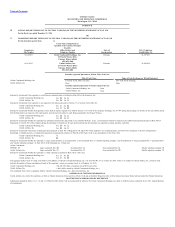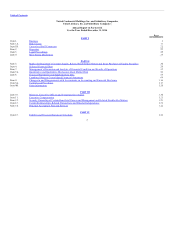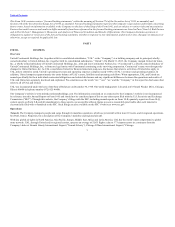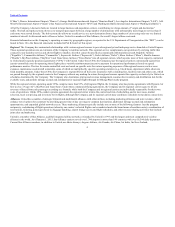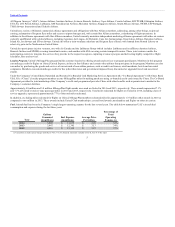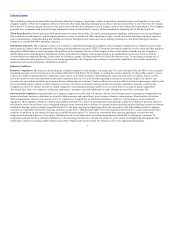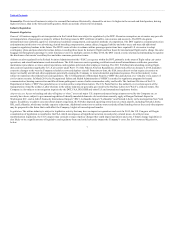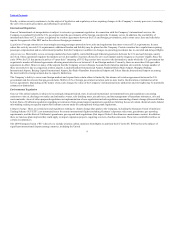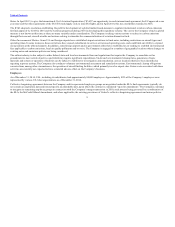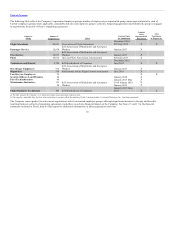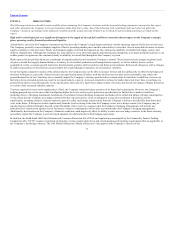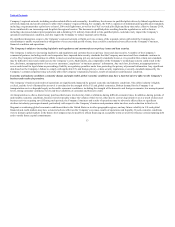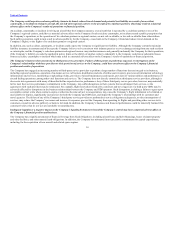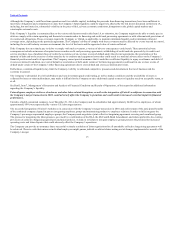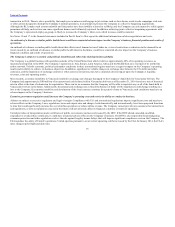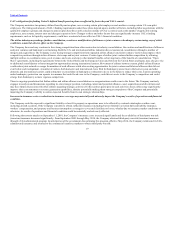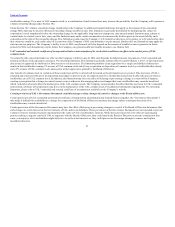United Airlines 2014 Annual Report Download - page 11
Download and view the complete annual report
Please find page 11 of the 2014 United Airlines annual report below. You can navigate through the pages in the report by either clicking on the pages listed below, or by using the keyword search tool below to find specific information within the annual report.
Table of Contents
High and/or volatile fuel prices or significant disruptions in the supply of aircraft fuel could have a material adverse impact on the Company’s strategic
plans, operating results, financial position and liquidity.
Aircraft fuel is critical to the Company’s operations and has been the Company’s single largest and most volatile operating expense for the last several years.
The Company generally sources adequate supplies of fuel at prevailing market prices and has some ability to store fuel close to major hub locations to ensure
supply continuity in the short term. Timely and adequate supply of aircraft fuel depends on the continued availability of reliable fuel supply sources and
delivery infrastructure. Although the Company has some ability to cover short term supply and infrastructure disruptions at its major demand locations, it can
neither predict nor guarantee the continued timely availability of aircraft fuel throughout the Company’s system.
Market prices for aircraft fuel depend on a multitude of unpredictable factors beyond the Company’s control. These factors include changes in global crude
oil prices, aircraft fuel supply-demand balance, inventory levels and fuel production and transportation capacity, as well as indirect factors, such as
geopolitical events, economic growth indicators, fiscal/monetary policies, fuel tax policies and financial investments. Both actual changes as well as changes
in market expectations of these factors can potentially drive rapid changes in fuel price levels and price volatility.
Given the highly competitive nature of the airline industry, the Company may not be able to increase its fares and fees sufficiently to offset the full impact of
increases in fuel prices, especially if these increases are rapid and sustained. Further, such fare and fee increases may not be sustainable, may reduce the
general demand for air travel and may also eventually impact the Company’s strategic growth and investment plans for the future. In addition, decreases in
fuel prices for an extended period may result in increased industry capacity, increased competitive actions for market share and lower fares or surcharges in
general. If fuel prices were subsequently to rise significantly, there may be a lag between improvement of revenue and the adverse impact of higher fuel prices
as a result of any increased industry capacity.
To protect against increases in the market prices of fuel, the Company routinely hedges a portion of its future fuel requirements. However, the Company’s
hedging program may not be successful in mitigating higher fuel costs, and any price protection provided may be limited due to market conditions,
including choice of hedging instruments, breakdown of correlation between hedging instrument and market price of fuel and failure of hedge counterparties.
To the extent that the Company uses hedge contracts that have the potential to create an obligation to pay upon settlement if fuel prices decline
significantly, including swaps or sold put options as part of a collar, such hedge contracts may limit the Company’s ability to benefit fully from lower fuel
costs in the future. If fuel prices decline significantly from the levels existing at the time the Company enters into a hedge contract, the Company may be
required to post collateral (margin) beyond certain thresholds. There can be no assurance that the Company’s hedging arrangements will provide any
particular level of protection against rises in fuel prices or that its counterparties will be able to perform under the Company’s hedging arrangements.
Additionally, deterioration in the Company’s financial condition could negatively affect its ability to enter into new hedge contracts in the future and may
potentially require the Company to post increased amounts of collateral under its fuel hedging agreements.
In addition, the Dodd-Frank Wall Street Reform and Consumer Protection Act of 2010 and regulations promulgated by the Commodity Futures Trading
Commission (the “CFTC”) require centralized clearing for over-the-counter derivatives and record-keeping and reporting requirements that are applicable to
the Company’s fuel hedge contracts. The UAL Board of Directors (“Board of Directors”) has approved the Company’s election of the
11

